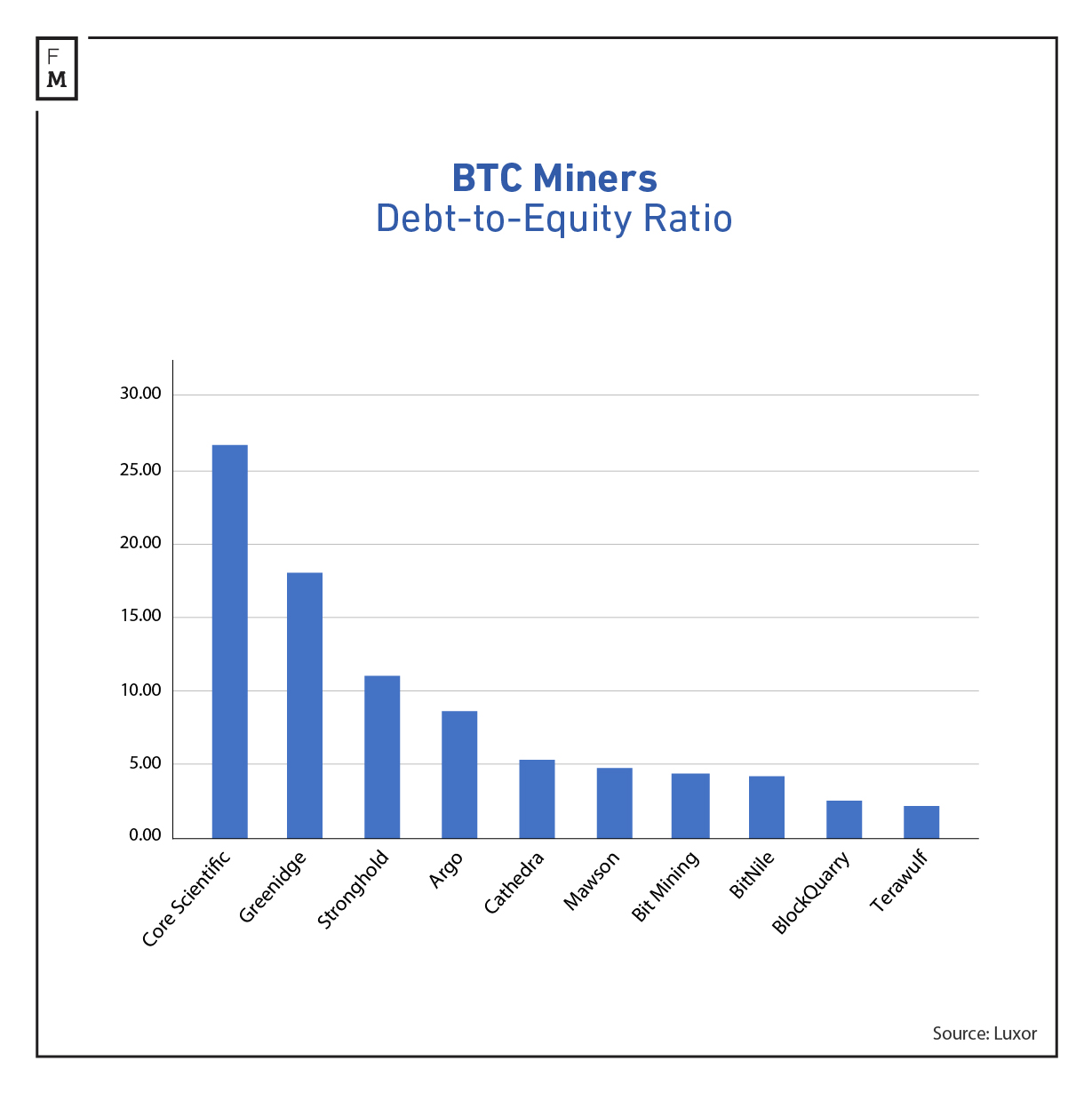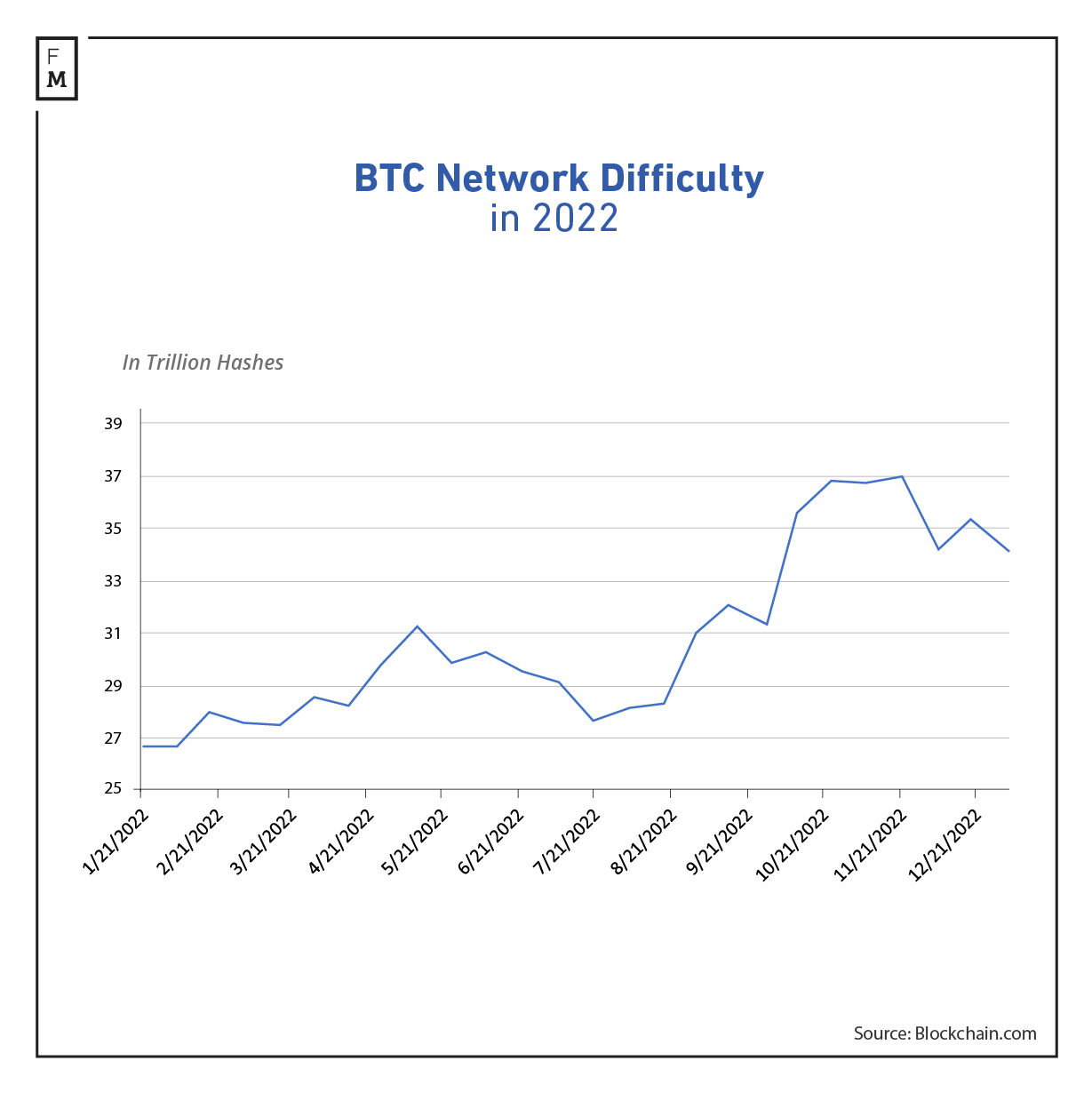Bitcoin (BTC), the oldest and largest cryptocurrency, closed last year with a loss of more than 60%. The mining industry also suffered from BTC's sharp price declines, with revenues falling 37.5% in 2022 to $9.55 billion.
Bitcoin Miners' Revenue Took a Dive in 2022
According to Glassnode data, mining revenues stood at $15.3 billion in 2021. However, the high-profile collapse of the TerraUSD ecosystem in May and then the FTX crypto exchange in November negatively affected the industry as a whole.
Moreover, rising interest rates worldwide have increased pressure on risk assets, including equities. Cryptocurrencies, which are highly correlated with the stock market, also began to lose, negatively affecting the condition of the digital assets mining companies.
The miners' daily revenue index reached a record high of $63 million in November 2021. However, by the end of 2022, it was at only $16 million, recording a very dynamic depreciation.

According to Doug Brooks, Senior Advisor at XinFin Foundation, there are three main drivers for the strong decline in revenues: large increase in energy prices, lower value of Proof of Work currencies like Bitcoin and rising competition.
"There are more miners than ever now, some are even publicly listed companies, so there is less bounty for each miner since the pot size is limited," Brooks commented.
BTC Miners' Debts Grow
As revenues and profitability declined, bitcoin miners found it increasingly difficult to repay their liabilities. According to Luxor data, the debt-to-equity ratio tripled for many popular and publicly listed mining companies.
For Core Scientific, one of the BTC miners from Wall Street, the ratio reached 26.7. Argo Blockchain (NASDAQ:ARBK), one of the world's largest miners, also increased its debt, with the debt-to-equity ratio jumping to 8.7.

Core Scientific had $1.3 billion in debt as of 30 September 2022, ultimately leading to a bankruptcy filing. On the other hand, Greenidge and Stronghold decided to restructure their current liabilities. The total debt among the ten miners analyzed by Luxor reached nearly $3.5 billion.
Will 2023 bring more debt and bankruptcies? According to Brooks, it "can most certainly be expected in the mining industry this year, particularly if the prices of BTC and other PoW-based currencies drop even further."
"Any significant reduction in energy prices is not apparent and conversion to a more sustainable and cost-effective energy source, where possible, would take time and be costly. Many miners are already operating near or below break-even levels, so their survival until any significant price bounce must be in doubt. Any further increase in cost or reductions in revenues will accelerate the shutting down of those in the weakest positions," Brooks added.
Significant Losses of Bitcoin Mining Companies
Although the largest publicly traded mining companies have not yet released their reports for the fourth quarter and the entire of 2022, the most recent trading updates and third-quarter reports showed a significant deterioration in the industry's health.
Canaan Inc. (NASDAQ:CAN), a cryptocurrency mining hardware manufacturer, reported a significant drop in revenue and net income in November. During the three-month period that ended on 30 September 2022, the computing solutions provider achieved a revenue of $137.5 million, 26% lower than in 2021. Net income slid 90% quarter-over-quarter to $8.6 million.
Bitfarms (NASDAQ:BITF), a cryptocurrency mining company, reported a decline in revenue in the same quarter, despite rising BTC production. The company mined 1,515 BTC in the third quarter, nearly 500 more than a year earlier.
Argo Blockchain found itself on the brink of bankruptcy but was rescued by a strategic deal with Galaxy Digital Holdings, Ltd, a financial firm focused on digital assets, owned by Mike Novogratz.
Bitcoin Network Difficulty Keeps Growing
Despite the decline in profitability, the BTC price and the valuation of mining the Bitcoin network difficulty has continued to rise throughout 2022. It clearly shows that despite the harsh conditions, the industry's competition has constantly been increasing.

At the beginning of 2022, it took 24 trillion hashes (TH) to generate a brand new Bitcoin, while 12 months later, the indicator reached a new all-time high of 37 trillion hashes. Since then, the difficulty of mining has decreased slightly to 35 TH but remains in the range of record highs.
 financemagnates.com
financemagnates.com